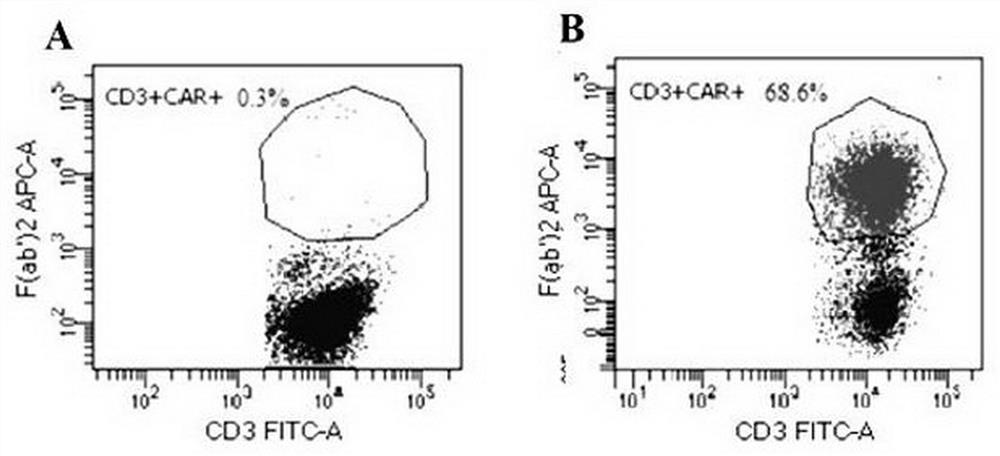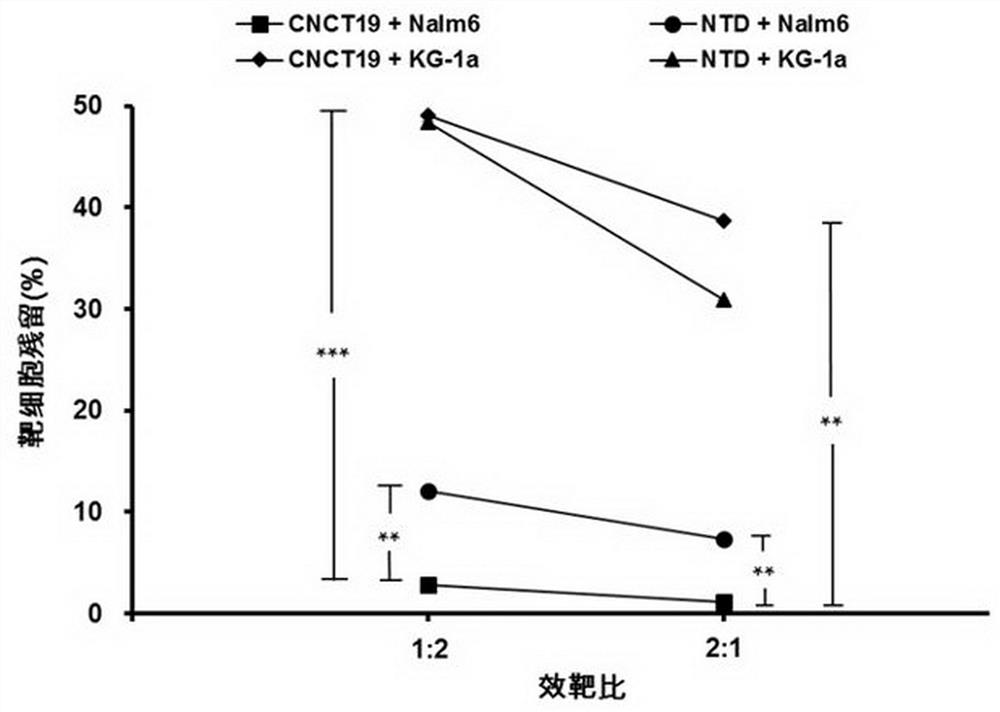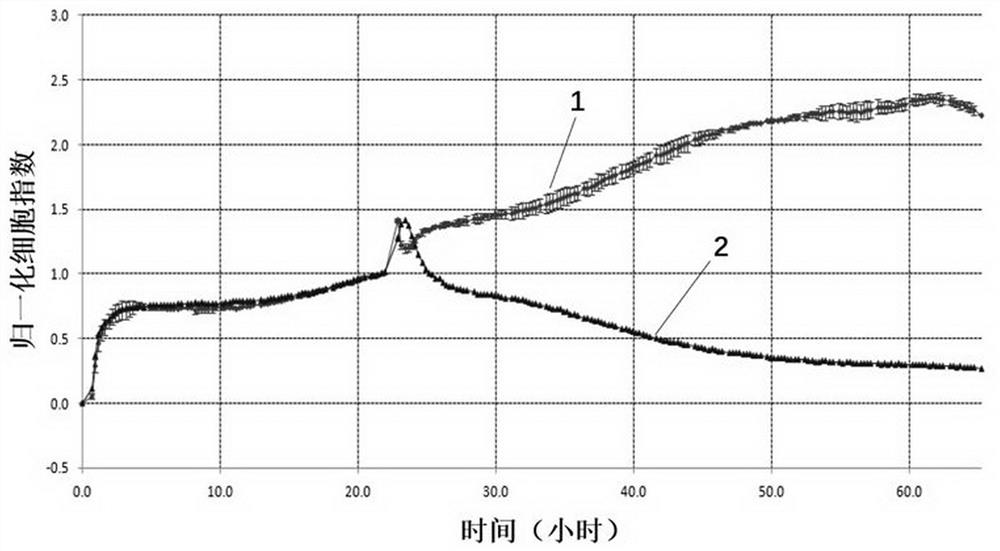CD19 targeting chimeric antigen receptor and application thereof
A chimeric antigen receptor and application technology, applied in the field of biomedicine, can solve the problem that the immune system cannot remove tumors well, reduce immunogenicity, etc., and achieve the effects of prolonging survival time, high safety and high expression
- Summary
- Abstract
- Description
- Claims
- Application Information
AI Technical Summary
Problems solved by technology
Method used
Image
Examples
Embodiment 1
[0107] Example 1. Construction of lentiviral vector
[0108] Artificially synthesized fragments containing the CAR structure described in this application (the amino acid sequence and nucleotide sequence are shown in SEQ ID NO. 1 and SEQ ID NO. 2, respectively), and constructed into a lentiviral vector (manufacturer: SBI, article number: CD500-CD800), the obtained expression vector was named CNCT19 expression vector, and then transfected to obtain lentivirus according to the method described in its instruction manual, and the virus transfection titer was determined by flow cytometry to confirm that a functional lentiviral vector was obtained .
Embodiment 2
[0109] Example 2. Preparation of lentivirus-infected T cells
[0110] Infection experiments were performed according to conventional methods known to those skilled in the art. A brief description of the infection steps is as follows:
[0111] 1. Sorting T Cells
[0112] Peripheral blood mononuclear cells (PBMC) were isolated from blood samples collected from subjects, and T cells were then sorted from PBMC cells.
[0113] 2. Activate T cells
[0114] Separated T cells were treated with complete lymphocyte culture medium (Xvivo15 medium + 5% FBS + 100IU / ml IL-2 or Xvivo15 medium + 5% FBS + 20ng / ml IL-21 + 10ng / ml IL-7) Resuspend to make the final concentration (1~2)×10 6 cells / ml, and add 5-10 μl of CD3 / CD28 stimulating magnetic beads, mix well and place in the incubator for culture, the culture condition is 37℃+5%CO 2 , the incubation time is at least 24 hours.
[0115] 3. Lentivirus Infection of T Cells
[0116] Take out the activated cultured T cells, add polybrene (p...
Embodiment 3
[0119] Example 3. Detection of the expression of CAR molecules on the surface of CNCT19 cells
[0120] The experimental steps are as follows:
[0121] (1) Centrifuge the CNCT19 cell suspension at 300g for 5 minutes, discard the supernatant, add sheath fluid and resuspend until the viable cell density is 0.5~1×10 7 cells / mL.
[0122] (2) Take 2 flow tubes for each sample, labeled as 1~2 tubes, the first tube is a blank control, no need to add antibodies, add 10 times diluted Alexa Fluor to the second tube ® 647-Goat anti-mouse IgG F(ab') 2 Antibody (manufacturer: Jackson, product number: 115-605-072) 10 μL.
[0123] (3) Add 100 μl of cell suspension to each tube, and react for 15-20 minutes at room temperature in the dark.
[0124] (4) Add 2ml of sheath fluid to each tube for washing, and centrifuge at 300g for 5 minutes.
[0125] (5) Discard the supernatant, add 20 μl of FITC-CD3 (manufacturer: Tongsheng Times, article number: Z6410047-100T) to the second tube, and incub...
PUM
| Property | Measurement | Unit |
|---|---|---|
| volume | aaaaa | aaaaa |
| volume | aaaaa | aaaaa |
Abstract
Description
Claims
Application Information
 Login to View More
Login to View More - R&D
- Intellectual Property
- Life Sciences
- Materials
- Tech Scout
- Unparalleled Data Quality
- Higher Quality Content
- 60% Fewer Hallucinations
Browse by: Latest US Patents, China's latest patents, Technical Efficacy Thesaurus, Application Domain, Technology Topic, Popular Technical Reports.
© 2025 PatSnap. All rights reserved.Legal|Privacy policy|Modern Slavery Act Transparency Statement|Sitemap|About US| Contact US: help@patsnap.com



